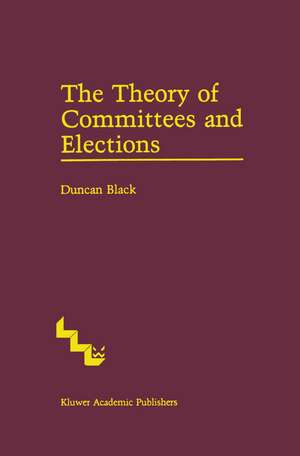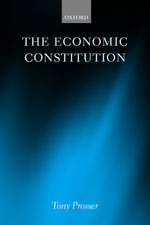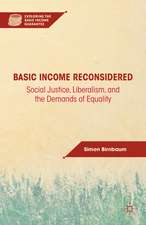The Theory of Committees and Elections
Autor Duncan Blacken Limba Engleză Paperback – 19 oct 2011
| Toate formatele și edițiile | Preț | Express |
|---|---|---|
| Paperback (1) | 780.42 lei 38-44 zile | |
| SPRINGER NETHERLANDS – 19 oct 2011 | 780.42 lei 38-44 zile | |
| Hardback (1) | 948.79 lei 6-8 săpt. | |
| SPRINGER NETHERLANDS – 31 dec 1986 | 948.79 lei 6-8 săpt. |
Preț: 780.42 lei
Preț vechi: 1026.87 lei
-24% Nou
Puncte Express: 1171
Preț estimativ în valută:
149.33€ • 155.93$ • 123.31£
149.33€ • 155.93$ • 123.31£
Carte tipărită la comandă
Livrare economică 11-17 aprilie
Preluare comenzi: 021 569.72.76
Specificații
ISBN-13: 9789401083751
ISBN-10: 9401083754
Pagini: 260
Ilustrații: XIV, 242 p.
Dimensiuni: 152 x 223 x 14 mm
Ediția:1987
Editura: SPRINGER NETHERLANDS
Colecția Springer
Locul publicării:Dordrecht, Netherlands
ISBN-10: 9401083754
Pagini: 260
Ilustrații: XIV, 242 p.
Dimensiuni: 152 x 223 x 14 mm
Ediția:1987
Editura: SPRINGER NETHERLANDS
Colecția Springer
Locul publicării:Dordrecht, Netherlands
Public țintă
ResearchCuprins
I The Theory of Committees and Elections.- I. A Committee and Motions.- II. Independent Valuation.- III. Can a Motion be Represented by the same Symbol on Different Schedules?.- IV. A Committee using a Simple Majority: Single-peaked Preference Curves.- V. A Committee using a Simple Majority: other Shapes of Preference Curves.- VI. A Committee using a Simple Majority: any Shapes of Preference Curves, Number of Motions Finite.- VII. Cyclical Majorities.- VIII. When the Ordinary Committee Procedure is in use the Members’ Scales of Valuation may be Incomplete.- IX. Which Candidate ought to be Elected?.- X. Examination of some Methods of Election in Single-member Constituencies.- XI. Proportional Representation.- XII. The Decisions of a Committee using a Special Majority.- XIII. The Elasticity of Committee Decisions with an Altering Size of Majority.- XIV. The Elasticity of Committee Decisions with Alterations in the Members’ Preference Schedules.- XV. The Converse Problem: the Group of Schedules to Correspond to a Given Voting Matrix.- XVI. A Committee using a Simple Majority: Complementary Motions.- XVII. International Agreements, Sovereignty and the Cabinet.- II History of the Mathematical Theory of Committees and Elections (Excluding Proportional Representation).- XVIII. Borda, Condorcet and Laplace.- XIX. E. J. Nanson and Francis Galton.- XX. The Circumstances in which Rev. C. L. Dodgson (Lewis Carroll) wrote his Three Pamphlets.- Appendix. Text of Dodgson’s Three Pamphlets and of ‘The Cyclostyled Sheet’.- A Discussion of the Various Methods of Procedure in Conducting Elections (1873).- Suggestions as to the Best Method of Taking Votes, Where More than Two Issues are to be Voted on (1874).- A Method of Taking Votes on More than Two Issues (1876) ‘TheCyclostyled Sheet’ (7 Dec. 1877).- Notes on Dodgson’s Third Pamphlet ‘A Method…’ (1876).












